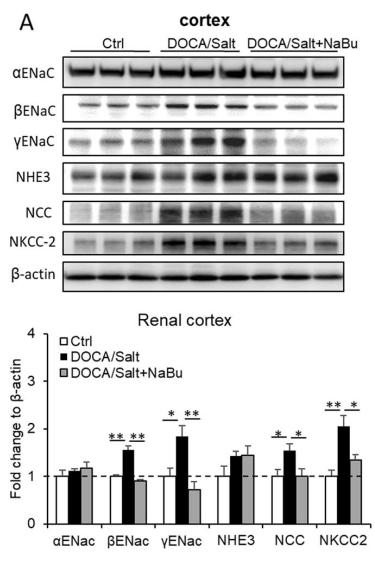SCNN1B Antibody - #DF6601
| Product: | SCNN1B Antibody |
| Catalog: | DF6601 |
| Description: | Rabbit polyclonal antibody to SCNN1B |
| Application: | WB IHC IF/ICC |
| Cited expt.: | WB |
| Reactivity: | Human, Mouse, Rat |
| Prediction: | Rabbit, Dog, Chicken, Xenopus |
| Mol.Wt.: | 73kDa; 73kD(Calculated). |
| Uniprot: | P51168 |
| RRID: | AB_2838563 |
Related Downloads
Protocols
Product Info
*The optimal dilutions should be determined by the end user.
*Tips:
WB: For western blot detection of denatured protein samples. IHC: For immunohistochemical detection of paraffin sections (IHC-p) or frozen sections (IHC-f) of tissue samples. IF/ICC: For immunofluorescence detection of cell samples. ELISA(peptide): For ELISA detection of antigenic peptide.
Cite Format: Affinity Biosciences Cat# DF6601, RRID:AB_2838563.
Fold/Unfold
Amiloride sensitive sodium channel subunit beta; Amiloride-sensitive sodium channel subunit beta; Beta NaCH; Beta-ENaC; Beta-NaCH; ENaC beta; ENaCB; Epithelial Na(+) channel subunit beta; Epithelial Na+ channel beta subunit; Epithelial Na+ channel subunit beta; Epithelial sodium channel beta 2 subunit; Epithelial sodium channel beta 3 subunit; Nonvoltage gated sodium channel 1 beta subunit; Nonvoltage gated sodium channel 1 subunit beta; Nonvoltage-gated sodium channel 1 subunit beta; SCNEB; SCNN 1B; SCNN1B; SCNNB_HUMAN; Sodium channel nonvoltage gated 1 beta (Liddle syndrome); Sodium channel nonvoltage gated 1 beta;
Immunogens
A synthesized peptide derived from human SCNN1B, corresponding to a region within C-terminal amino acids.
Detected in placenta, lung and kidney (PubMed:7762608). Expressed in kidney (at protein level) (PubMed:22207244).
- P51168 SCNNB_HUMAN:
- Protein BLAST With
- NCBI/
- ExPASy/
- Uniprot
MHVKKYLLKGLHRLQKGPGYTYKELLVWYCDNTNTHGPKRIICEGPKKKAMWFLLTLLFAALVCWQWGIFIRTYLSWEVSVSLSVGFKTMDFPAVTICNASPFKYSKIKHLLKDLDELMEAVLERILAPELSHANATRNLNFSIWNHTPLVLIDERNPHHPMVLDLFGDNHNGLTSSSASEKICNAHGCKMAMRLCSLNRTQCTFRNFTSATQALTEWYILQATNIFAQVPQQELVEMSYPGEQMILACLFGAEPCNYRNFTSIFYPHYGNCYIFNWGMTEKALPSANPGTEFGLKLILDIGQEDYVPFLASTAGVRLMLHEQRSYPFIRDEGIYAMSGTETSIGVLVDKLQRMGEPYSPCTVNGSEVPVQNFYSDYNTTYSIQACLRSCFQDHMIRNCNCGHYLYPLPRGEKYCNNRDFPDWAHCYSDLQMSVAQRETCIGMCKESCNDTQYKMTISMADWPSEASEDWIFHVLSQERDQSTNITLSRKGIVKLNIYFQEFNYRTIEESAANNIVWLLSNLGGQFGFWMGGSVLCLIEFGEIIIDFVWITIIKLVALAKSLRQRRAQASYAGPPPTVAELVEAHTNFGFQPDTAPRSPNTGPYPSEQALPIPGTPPPNYDSLRLQPLDVIESDSEGDAI
Predictions
Score>80(red) has high confidence and is suggested to be used for WB detection. *The prediction model is mainly based on the alignment of immunogen sequences, the results are for reference only, not as the basis of quality assurance.
High(score>80) Medium(80>score>50) Low(score<50) No confidence
Research Backgrounds
Sodium permeable non-voltage-sensitive ion channel inhibited by the diuretic amiloride. Mediates the electrodiffusion of the luminal sodium (and water, which follows osmotically) through the apical membrane of epithelial cells. Plays an essential role in electrolyte and blood pressure homeostasis, but also in airway surface liquid homeostasis, which is important for proper clearance of mucus. Controls the reabsorption of sodium in kidney, colon, lung and sweat glands. Also plays a role in taste perception.
Phosphorylated on serine and threonine residues. Aldosterone and insulin increase the basal level of phosphorylation.
N-glycosylated. N-glycosylation is required for interaction with BPIFA1.
Apical cell membrane>Multi-pass membrane protein. Cytoplasmic vesicle membrane.
Note: Apical membrane of epithelial cells.
Detected in placenta, lung and kidney. Expressed in kidney (at protein level).
Belongs to the amiloride-sensitive sodium channel (TC 1.A.6) family. SCNN1B subfamily.
Research Fields
· Organismal Systems > Sensory system > Taste transduction.
· Organismal Systems > Excretory system > Aldosterone-regulated sodium reabsorption.
References
Application: WB Species: rat Sample: renal cortex and medulla
Restrictive clause
Affinity Biosciences tests all products strictly. Citations are provided as a resource for additional applications that have not been validated by Affinity Biosciences. Please choose the appropriate format for each application and consult Materials and Methods sections for additional details about the use of any product in these publications.
For Research Use Only.
Not for use in diagnostic or therapeutic procedures. Not for resale. Not for distribution without written consent. Affinity Biosciences will not be held responsible for patent infringement or other violations that may occur with the use of our products. Affinity Biosciences, Affinity Biosciences Logo and all other trademarks are the property of Affinity Biosciences LTD.

